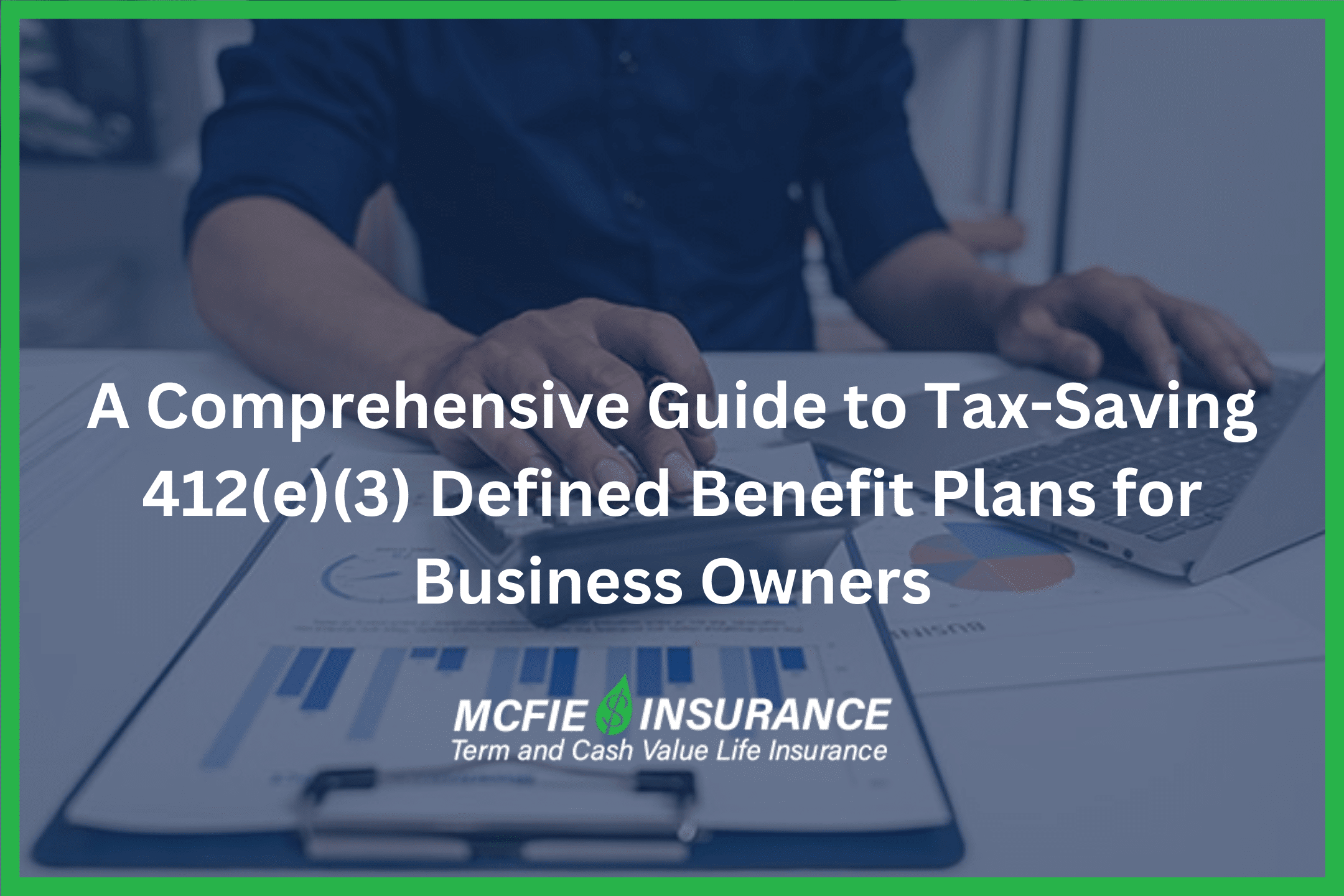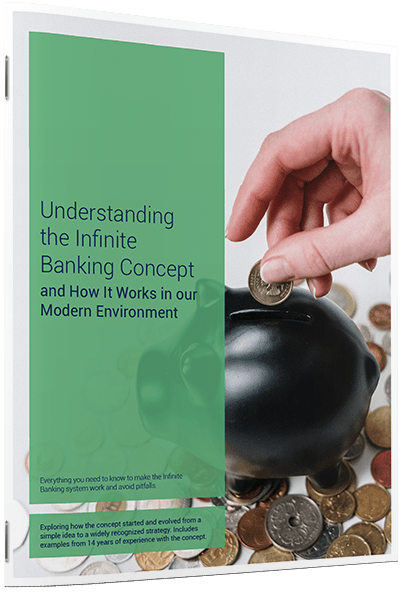702-660-7000
702-660-7000

For business owners who are looking to maximize their retirement savings while benefiting from significant tax advantages, a 412(e)(3) defined benefit plan may be a solution. This comprehensive guide explores the intricacies of 412(e)(3) defined benefit plans, shedding light on their features, benefits, and considerations. Understanding the workings of these plans, business owners can make the informed decisions necessary to build a secure and financially stable future.
A 412(e)(3) defined benefit plan is a special type of retirement savings vehicle. These plans are specifically designed for business owners who are high-income earners. They derive their name from section 412(e)(3) of the Internal Revenue Code, which governs these plans and how they are set up, funded and maintained. Unlike most retirement plans, a 412(e)(3) plan offers business owners a predetermined benefit at retirement, which is calculated based on factors such as age, income, and years of service.

An easy read and a perfect introduction to whole life insurance and The Perpetual Wealth Code™ Available in eBook or Audiobook format.
Download here>
One of the major advantages of a 412(e)(3) defined benefit plan is their significant tax savings potential. Contributions are made by an employer and are fully tax deductible, which reduces current taxable income. Furthermore, the plan’s assets grow tax-deferred, meaning there are no taxes until funds are distributed from the plan in retirement.
412(e)(3) plans allow for high contributions, enabling business owners to accumulate retirement savings at an accelerated pace. Employer contribution requirements are determined by an actuarial calculation, which considers the employee’s age, expected retirement age, compensation, and other factors which combined make these plans especially attractive for business owners older than 40 years of age.

Get the knowledge you need to build sustainable wealth, and have peace of mind about your financial future. Order here>
A key feature of 412(e)(3) defined benefit plans is that they can guarantee a specific retirement income. This supplies participants with a predictable income stream throughout their retirement years, which provides peace of mind and financial stability.
Assets held within a 412(e)(3) plan are protected from creditors’ claims, which provides an additional layer of asset protection for business owners.
The contribution amounts for a 412(e)(3) plan are determined by actuarial calculations and the plan usually requires third-party administration. Therefore, it is crucial to work with qualified professionals to make sure a 412(e)(3) plan is in compliance with IRS regulations.
412(e)(3) plans require regular funding so guaranteed retirement benefits can be generated. A business must be able to commit to making these required contributions consistently to maintain a plan’s integrity.
Unlike defined contribution plans such as 401(k)s and IRAs , 412(e)(3) plans offer limited flexibility when it comes to contributions. Yet, the guaranteed life-time income 412(e)(3) plans provide, can help overcome the downside of the more flexible defined contribution-based retirement plans, which do not provide an income guarantee.
One of the biggest objections for not owning whole life insurance is the cost associated with it. Many have swallowed the falsehood that whole life insurance is just way too expensive.
A cursory examination of the premiums paid for term insurance vs. a whole life insurance policy could compel someone to conclude that this commonly held belief is true. But the truth is found in understanding the facts not commonly held opinions.
Term insurance is a product which is designed to replace your income when your dependents need that income the most.
Term insurance premiums are lower for young, healthy individuals but become very expensive as the insured age increases or health issues pop up in life. These facts make it problematic to justify paying premiums for term insurance, which frequently become far more expensive than what the death benefit will pay the beneficiaries.
Term insurance policies fail to pay a death benefit over 98% of the time. When a death benefit is not paid on a term life insurance policy, 100% of the premiums which have been paid is money lost, as term insurance has no surrender or cash value.
These facts make considering owning whole life insurance a worthwhile idea because,
Whole life insurance, similar to term insurance, has lower premiums for younger and healthier individuals. Unlike term insurance, whole life insurance guarantees the cost of the premium will remain the same for the entire lifetime of the insured.
The surrender value, or cash value of whole life insurance, frequently exceeds the cost of the premiums paid for the policy creating a rate of return on premiums paid.
These features of whole life insurance make it the ideal life insurance to own long term. The longer a whole life policy is kept, the lower the real cost of the insurance coverage becomes. This is exactly the opposite of owning term life insurance where the longer a term policy remains is kept the more costly it becomes.
Small business owners who own whole life insurance have another way to lower the cost of keeping the whole life insurance coverage they need and want. Enter the 412(e)3 plan.
A 412(e)3 plan allows a small business owner to purchase whole life insurance with before tax dollars! Whole life insurance in a 412(e)3 plan can be purchased for its surrender value during retirement and 100% of the cash value and death benefit remain tax free for the policy owner and their beneficiaries.
If the 412(e)3 plan owner concurrently owns whole life insurance which is not included in their 412(e)3 plan, the cash values from these other whole life policies can be used to purchase the whole life insurance policy in the 412(e)3 plan during retirement, making this an even sweeter deal for the policyholder.

Understanding the Infinite Banking Concept and How It Works In Our Modern Environment 31-page eBook from McFie Insurance Order here>
Funding a 412(e)(3) Defined Benefit Plan may be just the answer for small business owners with less than 5 employees or for those employees who receive 1099 income. Here’s how it works:
A 412(e)(3) defined benefit plan presents business owners who are high-income earners, with a powerful retirement savings tool. They can offer significant tax advantages, allow for large contributions, and provide a guaranteed life-time retirement income.
Consulting with professionals, such as actuaries, third party administrators, certified accountants and insurance representatives, can help to ensure the plan you setup is structured effectively and in compliance with applicable regulations. In funding a 412(e)(3) defined benefits plan, business owners can build a robust retirement nest egg and help secure the stability of their financial future.
At McFie Insurance, we can help to provide and connect you with the professional help, resources and guidance you will need to initiate, fund and sustain your own 412(e)(3) plan. Call 702-660-7000 today to discover if you qualify for the generous tax savings and guaranteed life-time income a 412(e)(3) plan provides.
 Dr. Tomas P. McFie
Dr. Tomas P. McFie
Most Americans depend on Social Security for retirement income. Even when people think they’re saving money, taxes, fees, investment losses and market volatility take most of their money away. Tom McFie is the founder of McFie Insurance which helps people keep more of the money they make, so they can have financial peace of mind. His latest book, A Biblical Guide to Personal Finance, can be purchased here.